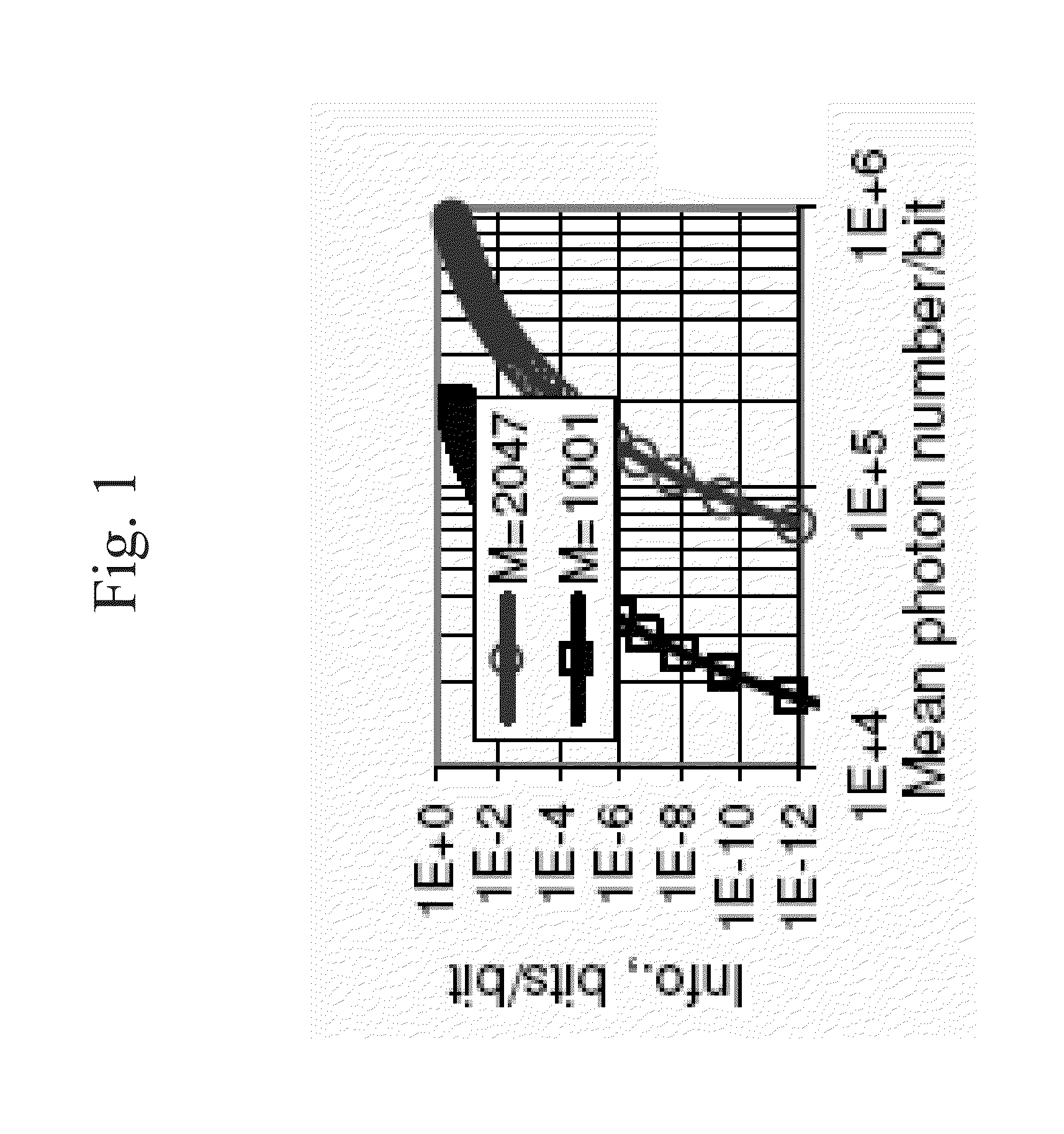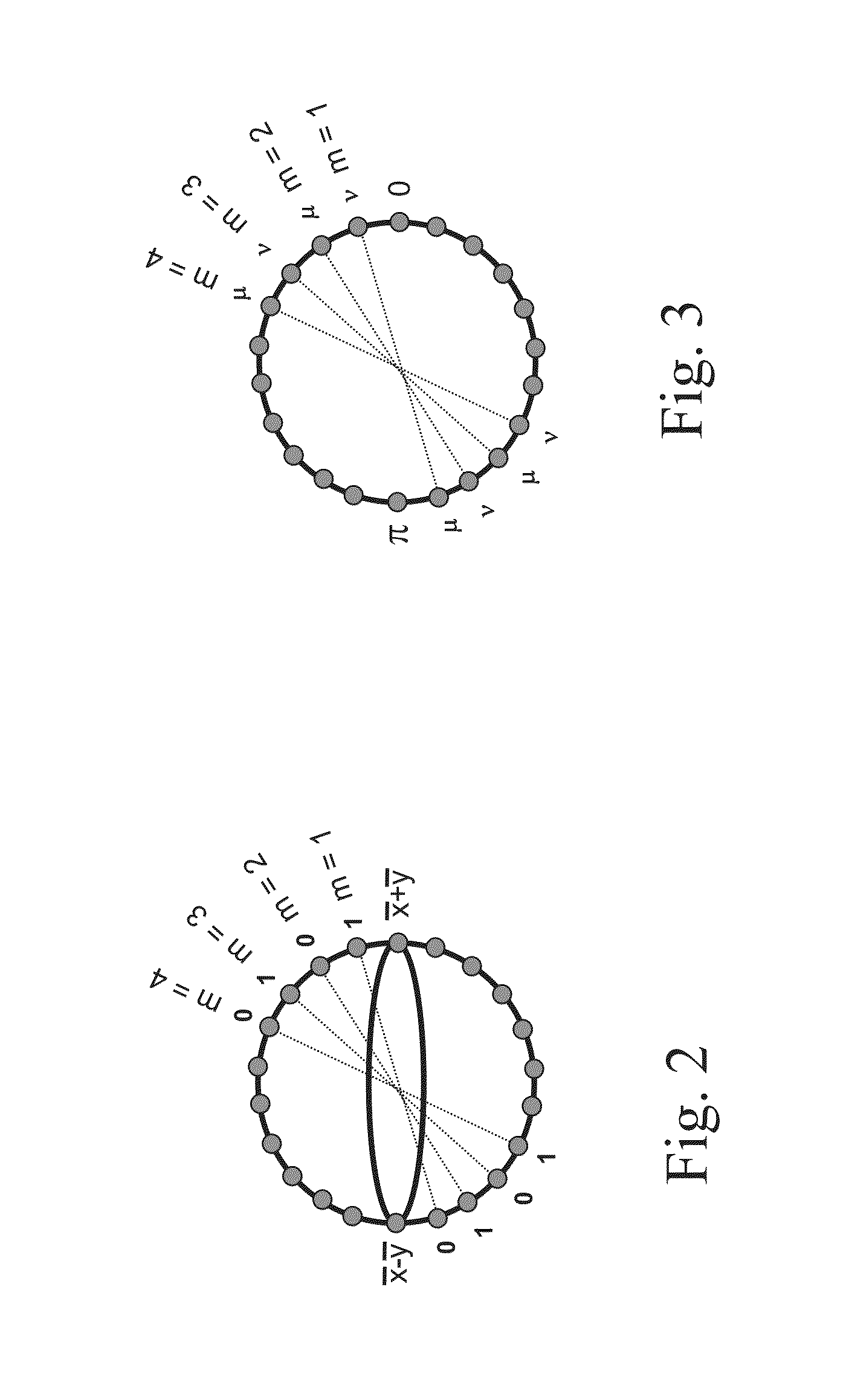Quantum encrypted data transmission in optically-amplified WDM communications
a quantum encrypted and optical amplifier technology, applied in the field of information security, can solve the problems of increasing the difficulty of ensuring the security of information transmission, the inability to prove the security of secret key algorithms, des and aes, and the inability to protect both types of algorithms from computer technology advances, etc., to achieve the effect of enhancing the market appeal, and reducing the risk of data loss
- Summary
- Abstract
- Description
- Claims
- Application Information
AI Technical Summary
Benefits of technology
Problems solved by technology
Method used
Image
Examples
Embodiment Construction
[0037]The present invention provides a quantum cryptographic protocol using two-mode coherent states that are optically amplifiable, resulting in a polarization independent implementation that is compatible with the existing WDM infrastructure, and an alternative implementation using polarization states that is particularly suited for free-space applications. Note that either implementation is applicable to both free-space and fiber-optic WDM networks. The present invention provides secure data encryption suitable for wavelength division multiplexing networks through an in-line amplified line. According to the present invention, any number of channels of a transparent WDM network, either in optical fiber or in free space, can be encrypted between two end points and such encrypted communication can be multiplexed with conventional unecrypted communication. The encrypted and unencrypted channels can be at different data rates, and since the encrypted channel is more complex it is typi...
PUM
 Login to View More
Login to View More Abstract
Description
Claims
Application Information
 Login to View More
Login to View More - R&D
- Intellectual Property
- Life Sciences
- Materials
- Tech Scout
- Unparalleled Data Quality
- Higher Quality Content
- 60% Fewer Hallucinations
Browse by: Latest US Patents, China's latest patents, Technical Efficacy Thesaurus, Application Domain, Technology Topic, Popular Technical Reports.
© 2025 PatSnap. All rights reserved.Legal|Privacy policy|Modern Slavery Act Transparency Statement|Sitemap|About US| Contact US: help@patsnap.com



